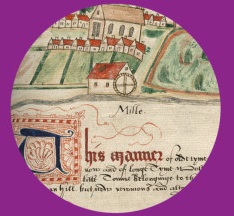
The volunteers got to grips with some fascinating documents this week from an eighteenth century Guild Book entry detailing the carving of the coat of arms by a stonemason who had been working at Alnwick Castle, to a pair of letters written in the same hand but with different signatures, complaining about life in the Berwick Workhouse.

There was one letter that was with the Tweedmouth Parish Records by an anonymous writer who was informing them about ‘a grat Blagard a Margaret Haberon that moment she gittes her the Prish money she goes to a wiske shop and spends it’. He claims that she isn’t caring for her children and wouldn’t be given any money if she had applied to Berwick for assistance.
Some research has been done on poor Margaret and she had rather a sad life. It is thought that her name was actually Hepburn and there are records of three baptisms of children born to William and Margaret Hepburn, David in 1818 in Tweedmouth who died aged 2 1/2 years old, Jane in 1820 also in Tweedmouth, and then after the family moved to Berwick, another David in 1822. Her husband was a cabinet maker who died at the age of 35 in the 1832 Cholera epidemic. This would explain why she was in receipt of Poor Relief from the parish.

The author of the original complaint was in fear of her burning down his house if she found out who had complained about her, obviously she was quite a formidable character! We assume that the letter was written by a man, as although the spelling is erratic it puts over its point forcibly, and the level of education for boys at the time would have been better than that on offer to girls.
So much to find out around one letter!
The other document that we looked at was ‘To Make Sirip of Turnips’ (used to treat ‘Conscumpsion or cough of the Lungs’) which was a mixture of sliced turnips, sugar, Hyssop Water, Aniseed, and liquorish root. I’m not sure if anyone went home to try it!






